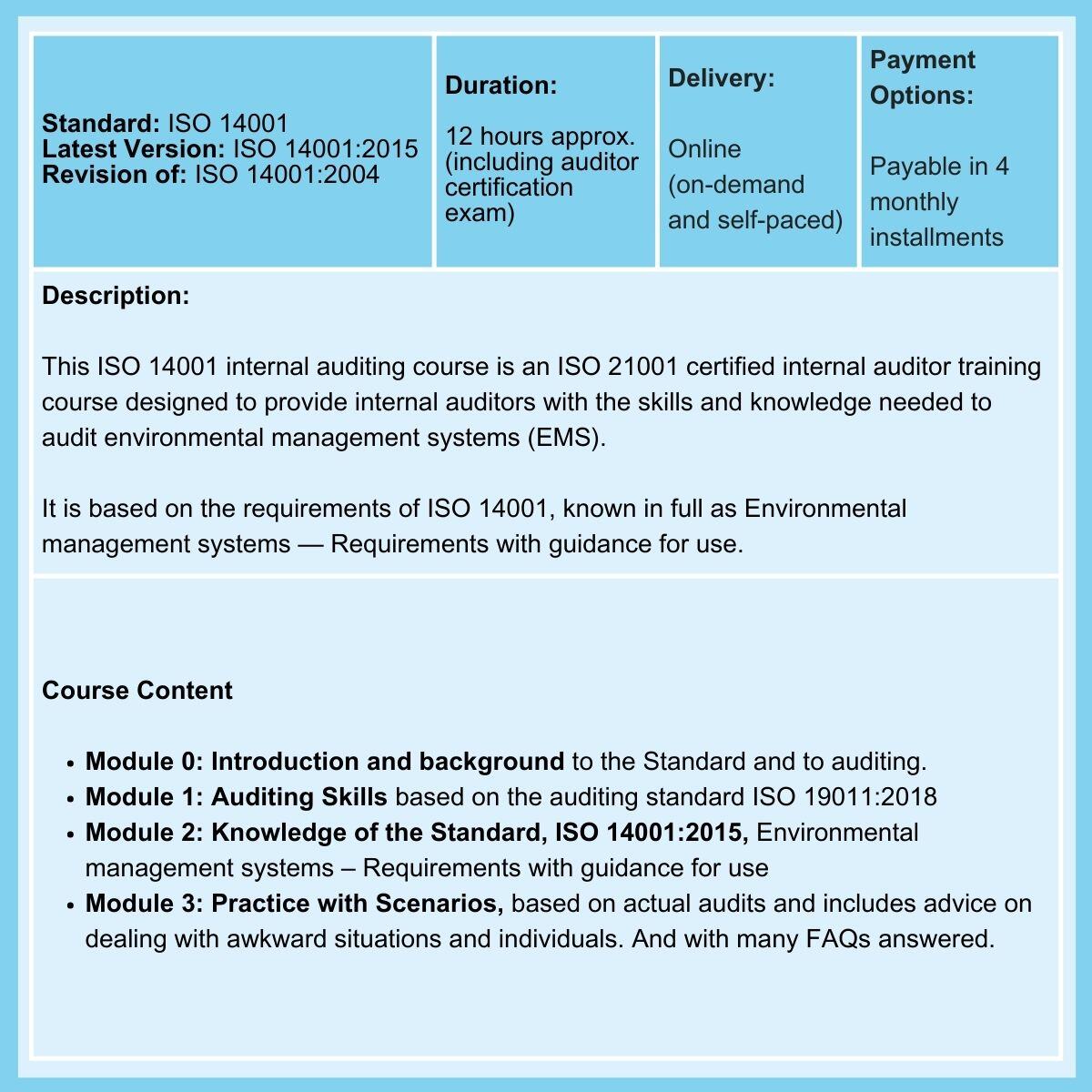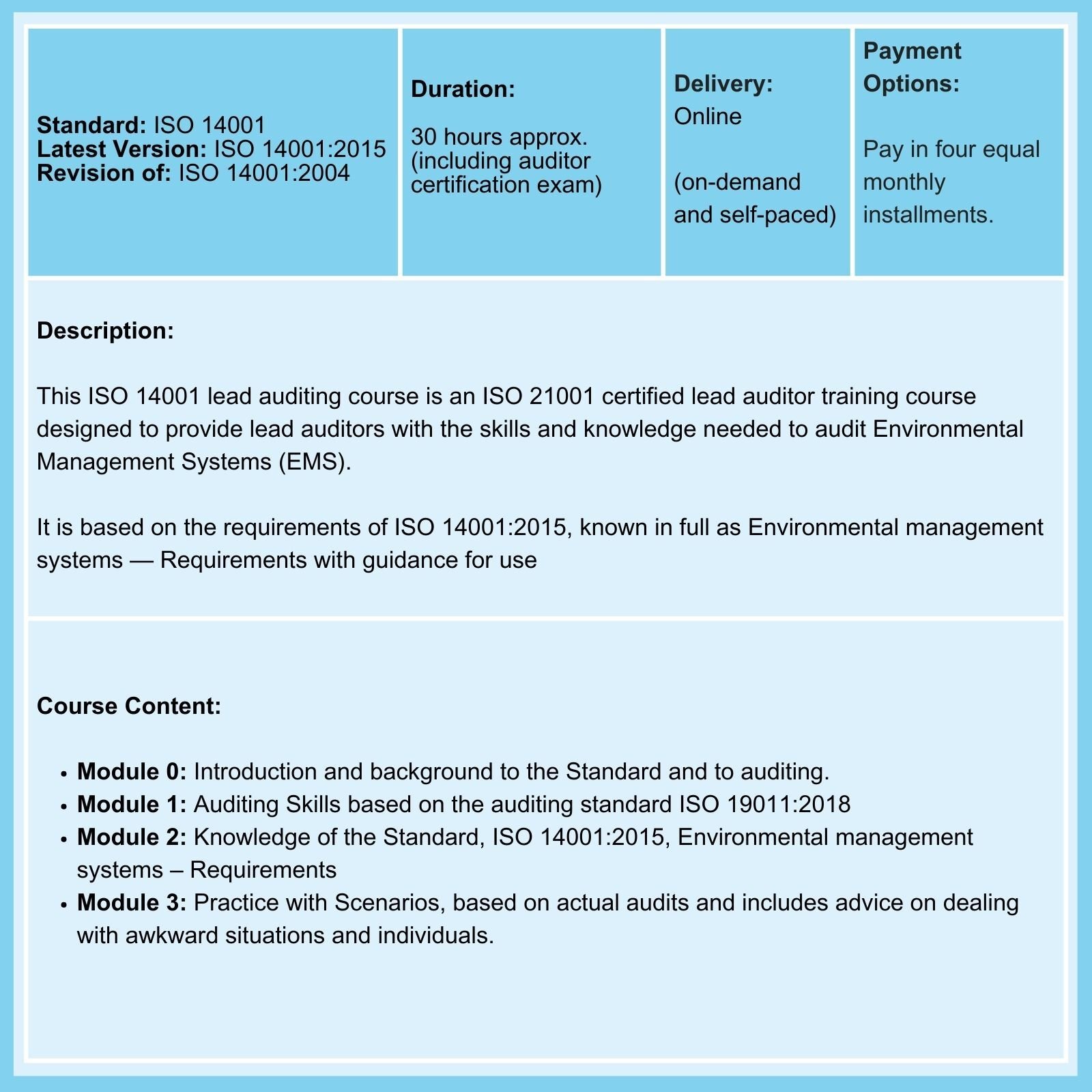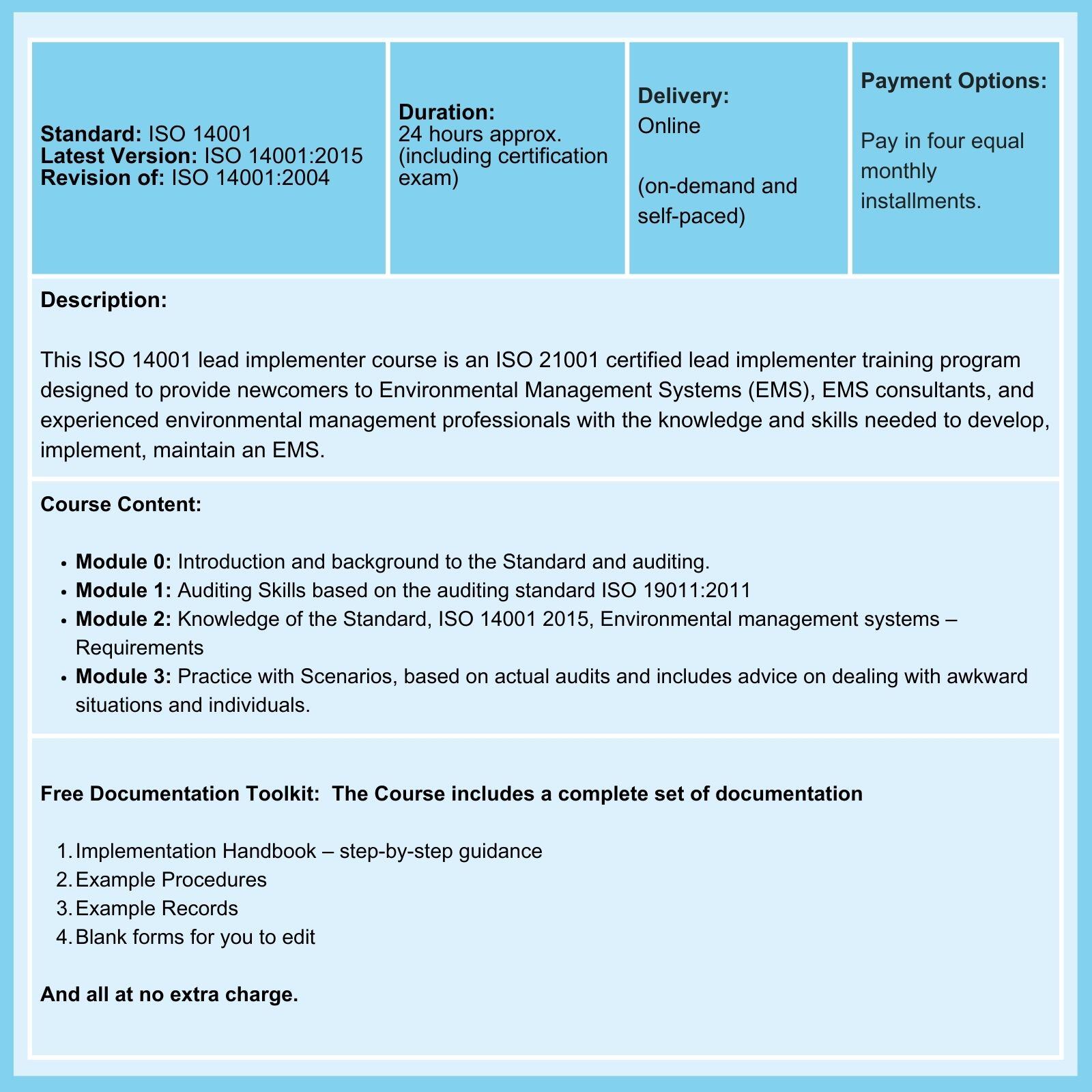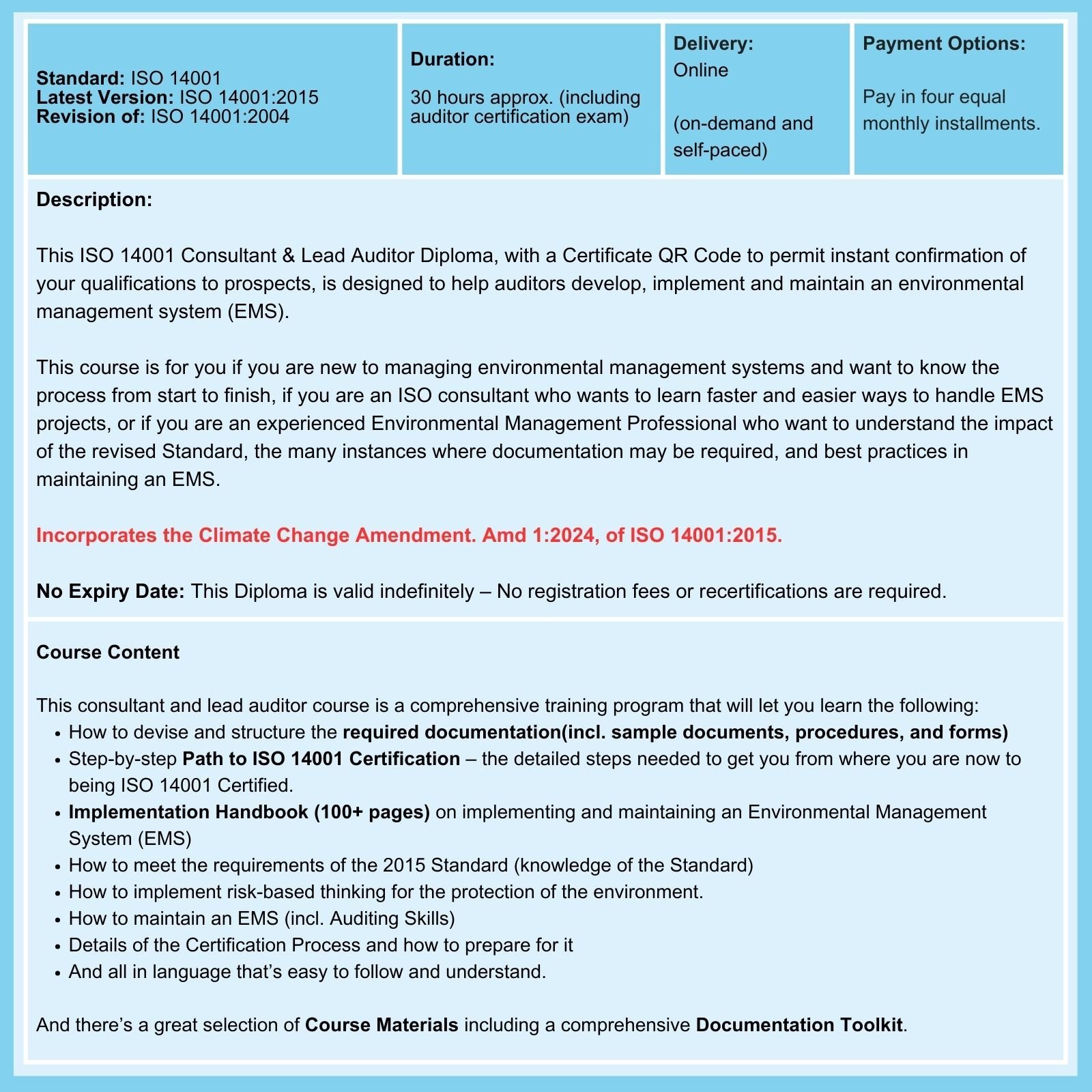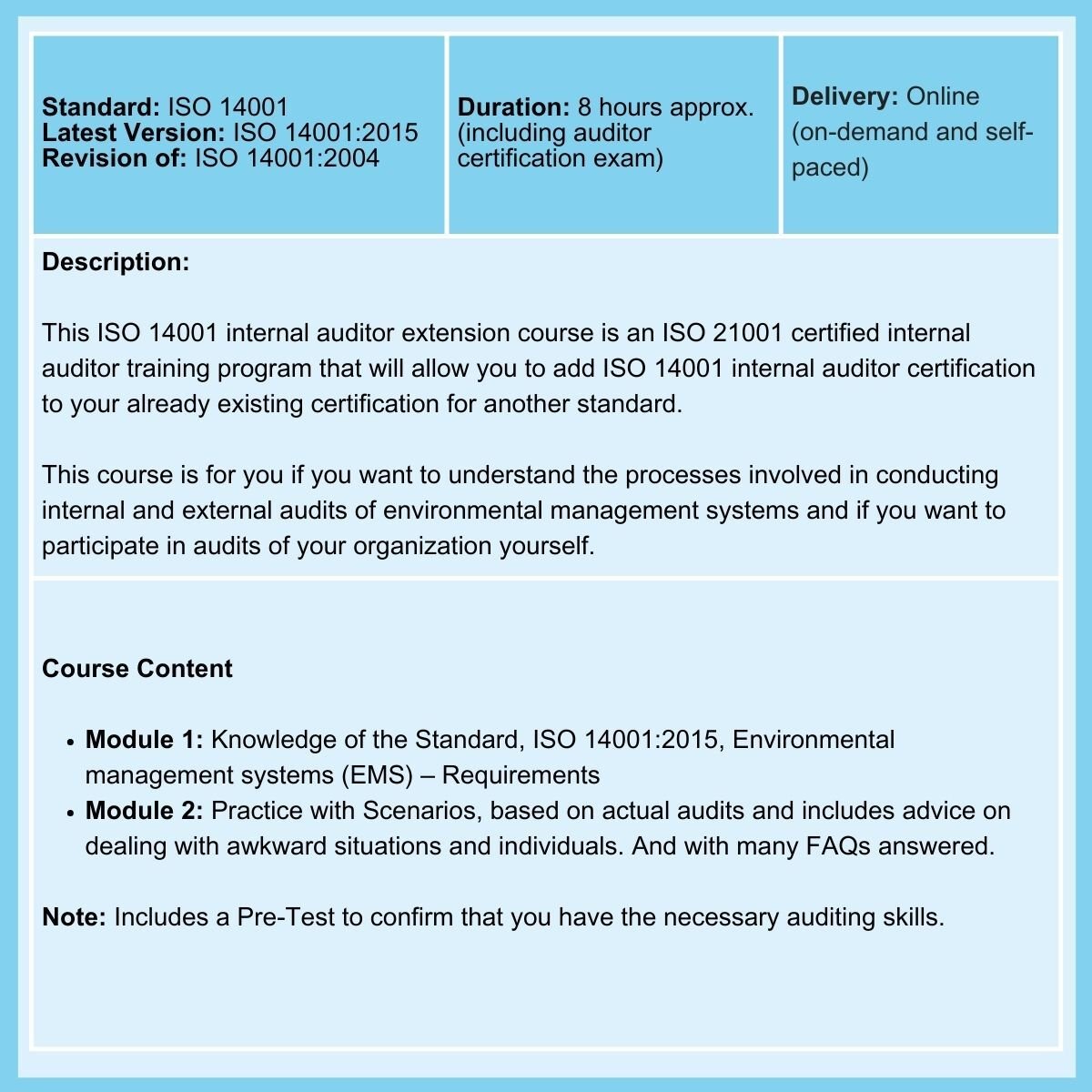
The ISO 14000 family of standards is a comprehensive set of guidelines and frameworks developed by the International Organization for Standardization (ISO) to help organizations manage their environmental responsibilities. ISO 14001, The Environmental Management System Standard, is just the beginning. These standards provide practical tools for managing the environmental aspects of business activities, products, and services. The aim is to help organizations reduce their impact on the environment, meet relevant laws and regulations, and continually improve their environmental performance. Here is an overview of many standards within the ISO 14000 family:
Core ISO 14000 Standards
- ISO 14001:2015 - Environmental management systems - Specifications with guidance for use
ISO 14001 is the leading international Environmental Management Systems (EMS) standard. It offers organizations the foundation to set up a system for managing their environmental impact. Unlike standards that dictate performance levels, ISO 14001 emphasizes continuous improvement, meaning organizations regularly assess and work to minimize their environmental footprint.
- ISO 14004:2016 - Environmental management systems — General guidelines on implementation:
ISO 14004:2016 bridges the gap between the ISO 14001 framework and practical implementation by providing a step-by-step guide for organizations to establish, implement, maintain, and continuously improve their EMS. Expanding on the basic requirements of ISO 14001, it gives detailed recommendations and explanations for each stage. This includes best practices, justifications for each step, and guidance on monitoring and improving environmental performance.
Supporting ISO 14000 Standards
- ISO 14006:2020 - Environmental management systems — Guidelines for incorporating eco-design:
ISO 14006:2020 builds on an existing Environmental Management System (EMS) by providing guidelines for incorporating eco-design principles to ensure that products are designed and developed with minimal environmental impact throughout their entire lifecycle. It does this by offering a step-by-step approach for establishing, implementing, and improving an eco-design management system, focusing on continuous improvement. This includes setting policies, ensuring top management commitment, training personnel, and using tools like life cycle assessment (LCA).
- ISO 14015:2022 - Environmental management — Environmental due diligence assessment:
ISO 14015:2022 guides organizations through environmental due diligence assessments (EDDA). Often used for mergers and acquisitions, property transactions, or loan applications, an EDDA comprehensively evaluates a business or site's environmental aspects. The standard provides a structured framework for conducting EDDAs, emphasizing precise planning, thorough information gathering, and a comprehensive site assessment.
- ISO 14031:2013 - Environmental management — Environmental performance evaluation — Guidelines:
ISO 14031:2013 equips organizations with a framework to continually improve their environmental performance. It guides them in establishing a system to assess environmental impact through critical areas like energy use and waste generation. It emphasizes selecting relevant Key Performance Indicators (KPIs) to track progress, and data collected is then used to set ambitious but achievable environmental objectives and targets.
- ISO 14044:2006/Amd 2:2020 - Environmental management — Life cycle assessment — Requirements and guidelines:
ISO 14044:2006/Amd 2:2020 provides comprehensive guidance for conducting Life Cycle Assessments (LCAs), a vital method for evaluating the environmental impacts of products and services across their entire lifecycle. The standard offers a structured, four-phase approach: defining goals and scope (what's being assessed and why), meticulously collecting data on resource use and emissions (Life Cycle Inventory), translating that data into potential impacts on the environment (Life Cycle Impact Assessment), and interpreting the results to draw conclusions. This emphasis on credibility, transparency, and flexibility allows organizations to tailor LCAs to their specific needs and gain valuable insights into their environmental footprint.
- ISO 14045:2012 - Environmental management — Eco-efficiency assessment of product systems — Principles, requirements and guidelines:
ISO 14045:2012 offers methods to quantify eco-efficiency (the balance between a product system's environmental performance and economic value), allowing organizations to compare products and identify areas for improvement. It provides a framework for evaluating a product's lifecycle, considering its environmental footprint (similar to an LCA) and economic value. This makes it a valuable decision-making tool for optimizing product design, reducing environmental impact, and potentially enhancing financial performance.
- ISO 14046:2014 - Environmental management — Water footprint — Principles, requirements, and guidelines:
ISO 14046:2014 tackles water management by providing a framework for assessing water footprint. Similar to a life cycle assessment but focused on water, this standard allows organizations to quantify their water use across three categories: blue (freshwater resources), green (rainwater stored in soil), and grey (water for wastewater dilution). By understanding their water footprint, organizations can identify areas of high consumption and potential water risks within their supply chain. ISO 14046 then equips them with strategies to reduce water use and improve water management practices.
- ISO 14051:2011 - Environmental management — Material flow cost accounting — General framework:
ISO 14051:2011 provides a framework for Material Flow Cost Accounting (MFCA), a tool for organizations to understand the financial implications of material use and waste generation. By tracking the physical flow and associated costs of materials throughout their operations, MFCA offers greater cost transparency. This valuable data allows organizations to make informed decisions, such as comparing virgin versus recycled materials costs and identifying areas to reduce expenses and waste.
Greenhouse Gas and Climate Change Standards
- ISO 14064-1:2018 - Greenhouse gases — Part 1: Specification with guidance at the organization level for quantification and reporting of greenhouse gas emissions and removals:
ISO 14064-1:2018 is an international standard that helps organizations track and communicate their impact on climate change by monitoring and reporting their greenhouse gas (GHG) footprint. It offers a structured approach for calculating emissions from energy use, transportation, and other activities while also considering actions taken by organizations to offset their carbon footprint. Furthermore, it encourages defining organizational boundaries to ensure accurate reporting and establishing a robust data management system. This system involves identifying data sources like utility bills, standardizing collection methods for consistency, and implementing quality control procedures to ensure reliable information.
- ISO 14065:2020 - General principles and requirements for bodies validating and verifying environmental information:
ISO 14065:2020 sets requirements for organizations that validate and verify environmental data that companies report to ensure the information is accurate and complete. The standard establishes competence requirements for validators and verifiers, defines the difference between validation (adherence to criteria) and verification (reflecting reality), and emphasizes transparency throughout the process.

